
 |
|
|
Nursery & Forest
Volume 63 Number 10 Date 07/05/2018 HEMLOCK TWIG RUST - Eastern hemlock nursery stock lightly infected with hemlock twig rust (Melampsora farlowii) was observed recently at a nursery dealer in Sawyer County. The disease can be damaging in nursery settings where it causes premature needle drop and shoot death. Fallen needles will later produce spores that can reinfect plants and perpetuate the disease cycle. Treatment and sanitation are recommended for production areas, though the disease is not common in naturalized hemlocks. -- Timothy Allen, DATCP Nursery Inspector PEAR LEAF BLISTER MITE - Feeding damage caused by this eriophyid mite was noticed on 'Parker' and 'Lucious' pears at nurseries in Polk County. These tiny mites feeding under the bud scales can cause leaf distortion and damage to fruits. In young pear trees, the damage may be significant enough to warrant treatment, although control is difficult since feeding occurs inside the leaf. The optimal treatment window is early just as the flower petals fall in the spring and in the fall when the mites emerge to feed under outer scales of the leaf buds over the winter. Mite damage is generally less apparent on pear cultivars with a russetted fruit skin texture. 'BLUE DUNE' LYME GRASS - The broad, blue leaf blades of 'Blue Dune' lyme grass (Leymus arenarius) are easily spotted among ornamental grass species. This grass is a "prohibited" species under the DNR Chapter NR 40 Invasive Species Rule, and as such cannot be possessed, sold, traded or shared in western Wisconsin. For the far eastern portion of the state, from Door County to Kenosha, this plant is "restricted," which means it cannot be sold, shared or traded in those counties. Nursery inspectors are required to order the removal and destruction of this grass when it is encountered. Some of Wisconsin's neighboring states have different restrictions regarding invasive plants, so it is important for nursery operators to regularly review the regulated species lists: https://dnr.wi.gov/topic/Invasives/documents/NR40plantlist.pdf GRAPE PHYLLOXERA - Galls were evident on the underside of grape leaves of assorted cultivars, including "King of the North," grape at a nursery dealer in Polk County. This tiny yellow aphid-like insect as an adult phylloxera lays its eggs in the fall under the grape vine bark. In the spring, the eggs hatch and the nymphs move onto newly formed leaves and start feeding and the grape leaf responds by creating a gall around the insect. There can be multiple generations of phylloxera in a season. Most galls are cosmetic damage, but in heavy amounts, you may have reduced vine vigor. -- Konnie Jerabek, DATCP Nursery Inspector 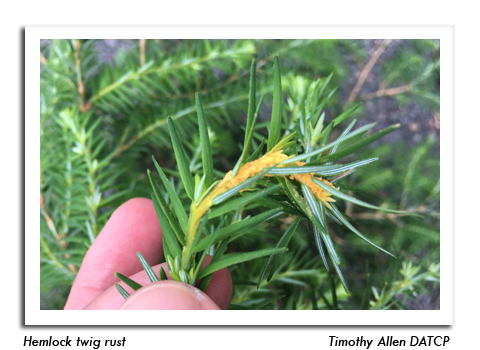
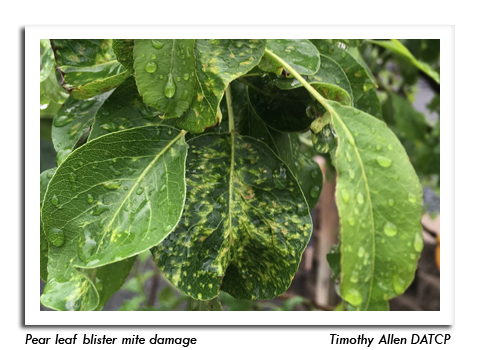
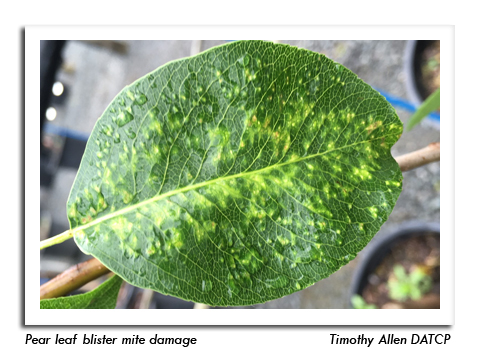
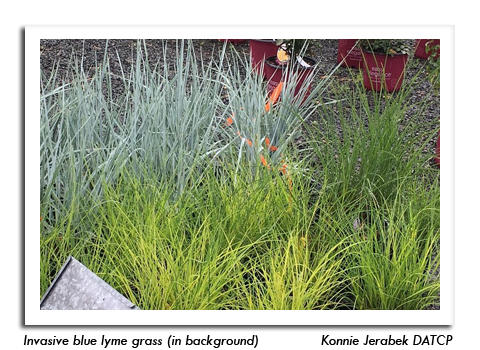
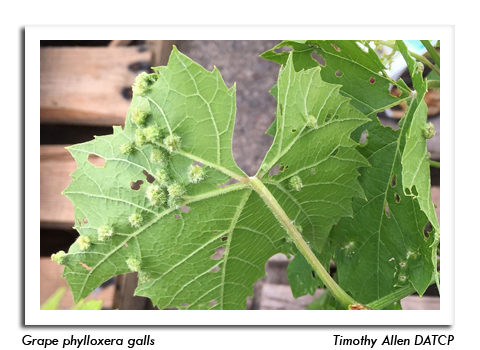
|
|
|